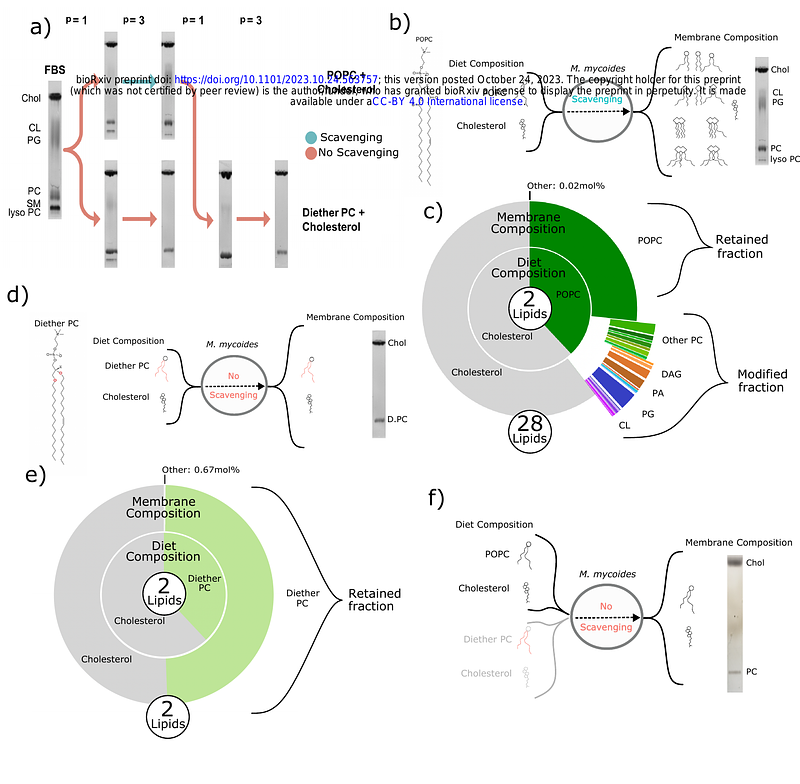Tuning and minimizing lipidome composition in Mycoplasma mycoides and the Minimal Cell JCVI-Syn3A

Tuning and minimizing lipidome composition in Mycoplasma mycoides and the Minimal Cell JCVI-Syn3A
Justice, I. G.; Saenz, J. P.
AbstractAll cells are encapsulated by a lipid membrane which facilitates the interaction between life and its environment. The property and function of the cell membrane is critically dependent on its lipidome composition which can range from 10s to 100s of unique lipid structures. How life has evolved to exploit such diverse mixtures of lipids has been experimentally challenging to address. In this study, we introduce a simple approach to minimize and tune lipidome composition in Mycoplasma mycoides and the Minimal Cell (JCVI-Syn3A). By varying the lipid composition of the growth medium, and introducing unmodifiable diether phospholipids, we demonstrate that a lipidome composed of two lipids can support life. By systematically reintroducing phospholipid features, we show that acyl chain diversity is more critical for supporting growth than head group diversity. We also reveal significant effects of altering phospholipid chirality on membrane permeability, cellular robustness, and growth, demonstrating how subtle changes in lipid stereochemistry can have profound effects on cell fitness. Our approach to tune mycoplasma lipidome composition introduces a minimal living model membrane system to understand the design principles and the role of lipid complexity in bioengineering of cell membranes.